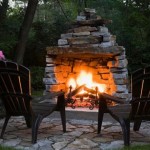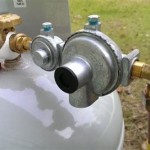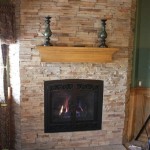Gas Fireplace Inserts: Exploring Ventless Options
Gas fireplace inserts offer an efficient and aesthetically pleasing alternative to traditional wood-burning fireplaces. They provide warmth and ambiance with the convenience of gas fuel, eliminating the need for wood storage and the mess associated with ashes. Among the various types of gas fireplace inserts, ventless models present a unique set of considerations regarding installation, performance, and safety. This article explores the features, benefits, drawbacks, and operational aspects of ventless gas fireplace inserts.
A gas fireplace insert is essentially a self-contained heating unit designed to fit into an existing fireplace opening. They operate on either natural gas or propane, offering a cleaner burn than wood. These inserts are available in a range of styles, from traditional log sets to contemporary glass media designs, allowing homeowners to personalize their living spaces. Ventless models, in particular, differentiate themselves by not requiring a chimney or flue for the exhaust of combustion gases.
Understanding Ventless Technology
The defining characteristic of a ventless gas fireplace insert is its ability to operate without an external venting system. This is achieved through a highly efficient combustion process that minimizes the production of harmful byproducts, such as carbon monoxide. Ventless models utilize oxygen depletion sensors (ODS) that continuously monitor the oxygen levels in the room. If the oxygen level drops below a safe threshold, the ODS automatically shuts off the gas supply, preventing the accumulation of carbon monoxide. This safety feature is critical to the safe operation of ventless gas fireplace inserts.
The clean combustion technology relies on precise fuel-to-air ratios and catalytic converters to further reduce emissions. These converters oxidize unburned hydrocarbons and carbon monoxide, converting them into carbon dioxide and water vapor. This process ensures that exhaust gases are within acceptable safety standards for indoor air quality. However, it's important to acknowledge that even with these advanced technologies, ventless gas fireplace inserts still produce some level of indoor air pollutants. Careful consideration must be given to room size and ventilation.
The absence of a chimney makes ventless inserts much easier and less expensive to install than vented models. This can be especially advantageous in homes where a chimney is absent or in disrepair. The installation process typically involves connecting the gas line, securing the insert into the fireplace opening, and testing the unit for proper operation. Professional installation is generally recommended to ensure compliance with local building codes and safety regulations. The installation also involves ensuring adequate clearances around the insert to prevent overheating of surrounding materials.
Advantages of Ventless Gas Fireplace Inserts
Ventless gas fireplace inserts offer several compelling advantages, primarily related to ease of installation, cost-effectiveness, and energy efficiency. The lack of a venting requirement significantly reduces installation costs since no chimney or flue modification is necessary. This can translate into considerable savings compared to vented gas fireplace inserts, which often require extensive construction work.
Ventless models boast higher energy efficiency ratings compared to their vented counterparts. Vented fireplaces lose a significant portion of their heat to the outside through the chimney. Because ventless inserts do not vent to the outside, all of the heat produced remains within the room. This can lead to lower heating bills and a more consistent indoor temperature. The efficiency is often expressed as a percentage, indicating the amount of fuel energy that is converted into usable heat.
Another benefit is the flexibility in placement. Since no venting is required, ventless inserts can be installed in a wider range of locations within the home. This opens up possibilities for incorporating a fireplace into rooms that were previously unsuitable for traditional wood-burning or vented gas fireplaces. For example, they can be installed in basements or bedrooms, provided all safety guidelines are followed.
Finally, many ventless gas fireplace inserts are equipped with remote controls, allowing for convenient operation. These remotes often provide control over the flame height, heat output, and fan speed, offering personalized comfort. Some models also incorporate programmable timers and thermostats, further enhancing convenience and energy savings.
Potential Drawbacks and Safety Considerations
While ventless gas fireplace inserts offer numerous benefits, it is crucial to acknowledge the potential drawbacks and safety considerations associated with their use. The primary concern revolves around indoor air quality. Although ventless models are designed to burn cleanly, they still produce carbon dioxide and water vapor. Inadequate ventilation can lead to a buildup of these gases, potentially causing discomfort, such as headaches and drowsiness, or, in extreme cases, carbon monoxide poisoning.
To mitigate these risks, it is essential to ensure adequate ventilation in the room where the ventless gas fireplace insert is installed. This can be achieved by opening a window or door slightly, or by using exhaust fans to circulate air. It is also recommended to install carbon monoxide detectors in the home to provide an early warning in case of a malfunction or improper combustion.
Another factor to consider is the potential for increased humidity. Ventless gas fireplaces produce water vapor as a byproduct of combustion. In poorly ventilated spaces, this can contribute to increased humidity levels, potentially leading to mold growth and other moisture-related problems. Using a dehumidifier can help to manage humidity levels in such cases.
It is imperative to select a ventless gas fireplace insert that is certified by a reputable organization, such as the American Gas Association (AGA) or Underwriters Laboratories (UL). These certifications ensure that the unit meets established safety standards and has been tested for proper performance. Additionally, adherence to all manufacturer instructions and local building codes is essential for safe and effective operation.
Maintaining and Operating Ventless Gas Fireplace Inserts
Proper maintenance is crucial for the safe and efficient operation of a ventless gas fireplace insert. Regular cleaning of the burner assembly and surrounding components is necessary to remove dust, debris, and soot that can accumulate over time. This helps to ensure proper combustion and prevent malfunctions.
The oxygen depletion sensor (ODS) should be inspected periodically to ensure that it is functioning correctly. A malfunctioning ODS can compromise the safety of the unit and should be replaced immediately. Consult the manufacturer's instructions for guidance on inspecting and maintaining the ODS.
Annual professional servicing is highly recommended. A qualified technician can inspect the gas line, burner assembly, and other critical components to identify potential problems and ensure optimal performance. This can help to prevent costly repairs and extend the lifespan of the unit.
When operating a ventless gas fireplace insert, it is important to follow all safety guidelines provided by the manufacturer. Never leave the unit unattended for extended periods, and always ensure that the area around the fireplace is clear of flammable materials. It's also crucial to educate all household members on the operating procedures and safety precautions associated with the unit.
In conclusion, ventless gas fireplace inserts offer a convenient and efficient heating solution for homeowners seeking an alternative to traditional fireplaces. Their ease of installation, cost-effectiveness, and energy efficiency make them an attractive option. However, it is essential to carefully consider the potential drawbacks and safety considerations associated with their use, including indoor air quality and ventilation requirements. By adhering to manufacturer instructions, obtaining necessary certifications, and implementing proper maintenance practices, homeowners can enjoy the benefits of ventless gas fireplace inserts while minimizing potential risks.

Vent Free Inserts White Mountain Hearth

Procom Universal Ventless Firebox 170016 The Home Depot

Duluth Forge Dual Fuel Ventless Gas Fireplace Insert 26 000 Btu Remote Control Fdf300r 170032 The Home Depot

Vent Free Inserts White Mountain Hearth

Duluth Forge 36 In Ventless Dual Fuel Fireplace Insert With Remote Control Fdi32r The Home Depot
:max_bytes(150000):strip_icc()/ventless-gas-fireplaces-4160746-hero-f9d4bdcd9bd446eb84406de306f790ba.jpg?strip=all)
How To Pick Out A Ventless Gas Fireplace

Monessen 33 Inch Solstice Vent Free Gas Fireplace Insert Intermittent Pilot

Superior Fireplaces 42 Vent Free Firebox Fine S Gas

Procom 29in Ventless Gas Dual Fuel Fireplace Insert 26 000 Btu T Stat Control Model Fbnsd28t Com

Small Fireplaces I Hearthcabinet Ventless
Related Posts








